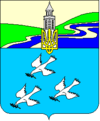Radomyshl
| Radomyshl Радомишль | ||
|---|---|---|
| City | ||
|
| ||
| ||
 Radomyshl Location of eradicated town of Trochinbrod (Zofiówka) within present-day Ukraine | ||
| Coordinates: 50°29′41″N 29°14′00″E / 50.49472°N 29.23333°ECoordinates: 50°29′41″N 29°14′00″E / 50.49472°N 29.23333°E | ||
| Country |
| |
| Oblast |
| |
| Raion | Radomyshl Raion | |
| First mentioned | 1150 | |
| Area | ||
| • Total | 6.5 km2 (2.5 sq mi) | |
| Population (2013) | ||
| • Total | 14,943 | |
Radomyshl (Ukrainian: Радомишль, translit., Radomyshl’) is a historic city in Zhytomyr Oblast (province) of northern Ukraine. It is the administrative center of Radomyshl Raion (district), and is located on the left bank of Teteriv River, a right tributary of Dnieper River. Its population is approximately 14,716 (2017 est.)[1].
History
Since 1150, it was known as Mychesk, and renamed under Polish administration to Radomyśl, and after World War II to its current name.
Radomyshyl was historically a centre of Jewish settlement. In the year 1797 a total of 1,424 people or 80% of the total population were Jewish. In 1847 it had increased to 2,734 and it further increased to 7,502 (67%) in 1897. In 1910 Radomyshl had a Talmud-Torah and five Jewish schools. In 1919 during the Russian Civil War a pogrom by militants under ataman Sokolovsky struck the community. Many were massacred and others fled. In 1921 Radomyshl Synagogue was burned down. By 1926 the Jewish population had declined to 4,637 (36% of the total population). In 1939, 2.348 Jews were living in the town which represented 20% of all population.
The Holocaust
During World War II, Radomyshl was occupied by the German Army from July 9, 1941 to November 10, 1943 then again from December 7 to 26, 1943. In August, 1941, the Germans established an open ghetto for the Jews. On August 5 and 6, 1941, 276 Jews were killed in two mass executions. On September 6, 1941, Sonderkommando 4a in collaboration with Ukrainian Auxiliary Police shot 1,107 adults and 561 children in the forest during the ghetto liquidation Aktion.[2] Six mass graves have been discovered in the area. Only 250 Jews remained by 1970.[3][4]
Nowadays Radomyshl is known primarily for the Museum of Ukrainian home icons located in Radomysl Castle, a private museum founded by Olga Bogomolets, MD.[5]
Gallery
 War memorial
War memorial- Taras Shevchenko monument in Radomyshl
 St. Nicholas Cathedral
St. Nicholas Cathedral Archimandrite Jelysej Pleteneckyj monument
Archimandrite Jelysej Pleteneckyj monument
See also
References
- ↑ "Чисельність наявного населення України (Actual population of Ukraine)" (in Ukrainian). State Statistics Service of Ukraine. Retrieved 26 August 2017.
- ↑ http://yahadmap.org/#village/radomyshl-zhytomyr-ukraine.676
- ↑ http://marchevsky.net/historia_de_familia_donde.htm
- ↑ http://radomyshl.lk.net/history.html
- ↑ Bogomolets O. Radomysl Castle-Museum on the Royal Road Via Regia". — Kyiv, 2013 ISBN 978-617-7031-15-3
External links
| Wikisource has the text of the 1911 Encyclopædia Britannica article Radomysl. |
- Radomyshl Ukraine by Eli Kislyuk
- Radomyshl (Ukrainian and Russian language): Last news, city photos, events, forum; by Max Gryschenko
- RADOMYSHL IS OUR HOME photos, videos, radio, article, references, maps; by Pavel Tuzhyk
- The Official Site of Radomysl Castle
